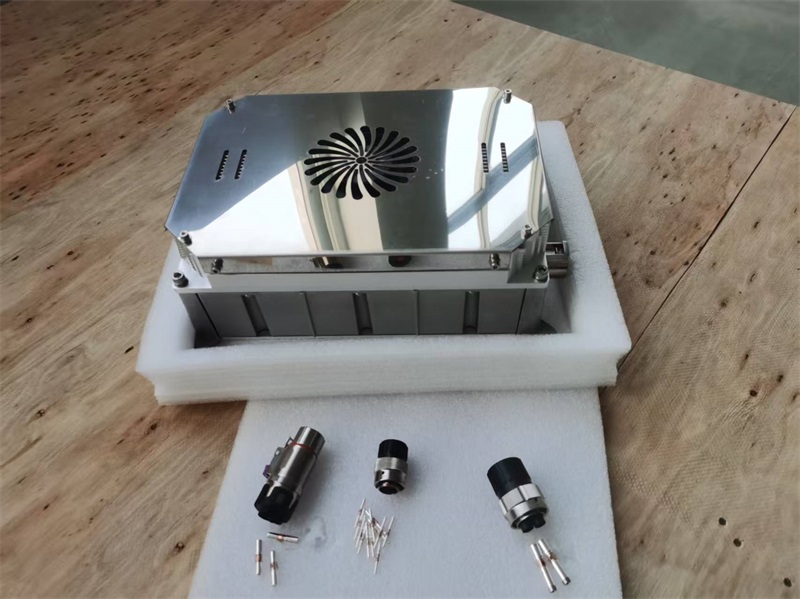As electric vehicles (EVs) continue transforming modern transportation, one component plays a particularly vital role in charging efficiency—the 6kW on-board charger. This sophisticated system bridges the gap between power grids and EV batteries, ensuring reliable energy conversion. In this guide, we explore the essential details found in a typical 6kW on-board charger manual, helping users and technicians maximize its performance and longevity.

The 6kW on-board charger is an integral part of an EV's charging system, converting alternating current (AC) from charging stations into direct current (DC) to replenish the vehicle's battery. Its operation is governed by precise engineering standards, which are documented in the manufacturer’s manual. Below, we break down the key sections typically covered in such manuals.
The manual provides critical electrical and performance details, including:
● Input/Output Ratings: Voltage and current requirements for AC input and DC output.
● Efficiency Metrics: How effectively the charger converts power, minimizing energy loss.
● Compatibility: Supported charging standards (e.g., CCS, CHAdeMO, or Type 2 connectors).
Understanding these specifications ensures the charger works optimally with different power sources and EV models.
Proper installation is crucial for safety and efficiency. The manual typically includes:
● Wiring Diagrams: Clear schematics for correct electrical connections.
● Mounting Instructions: Proper placement to avoid overheating or mechanical stress.
● Safety Precautions: Measures to prevent electrical hazards during setup.
Following these guidelines helps avoid malfunctions and extends the charger’s lifespan.
The charger interacts with external stations using industry-standard protocols. The manual explains:
● Communication Interfaces: How the charger "handshakes" with charging stations.
● Smart Charging Features: Support for load balancing, scheduled charging, and grid interaction.
This ensures seamless compatibility across different charging networks.
Most modern chargers include intuitive interfaces for monitoring and control. The manual covers:
● Display Indicators: Status lights or screens showing charging progress, errors, or warnings.
● Remote Management: App or touchscreen controls for adjusting charging parameters.
Users can leverage these features to optimize charging sessions and diagnose issues.
To keep the charger in peak condition, the manual outlines:
● Routine Checks: Cleaning connectors, inspecting cables, and verifying cooling systems.
● Software Updates: Firmware upgrades to improve performance or add features.
● Troubleshooting Steps: Common issues (e.g., slow charging, connection errors) and solutions.
Proactive maintenance minimizes downtime and prevents costly repairs.
Given the high-power nature of EV charging, safety is paramount. The manual emphasizes:
● Electrical Safety: Proper grounding, insulation checks, and surge protection.
● Thermal Management: Preventing overheating through ventilation or cooling systems.
● Emergency Procedures: Steps to take in case of faults or electrical hazards.
Adhering to these guidelines protects both users and equipment.
The 6kW on-board charger manual is an indispensable resource for EV owners, technicians, and manufacturers. By detailing technical specs, installation procedures, communication protocols, user controls, maintenance, and safety measures, it ensures efficient and reliable charging—key to advancing EV adoption.
As the automotive industry shifts toward electrification, understanding these systems will become increasingly important. Whether you're a technician installing a charger or an EV owner optimizing your vehicle’s performance, this guide underscores the importance of leveraging the manual to its fullest potential.
With proper use and maintenance, the 6kW on-board charger will continue to play a pivotal role in making electric mobility more accessible, efficient, and sustainable.
Next:BAK Battery Unveils Next-Generation Cylindrical Cell Technology for Global E-Bike Market
Previous:Tesla Reports EV Batteries Retain 80% Capacity Over 200,000 Miles
Contact Person: Miss. Kiki
| WhatsApp : | +8617763224709 |
|---|---|
| Skype : | +8617763224709 |
| WeChat : | +8617763224709 |
| Email : | kiki@lifepo4-battery.com |